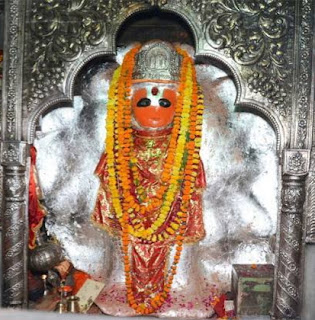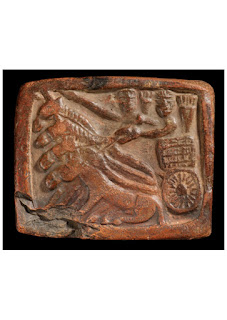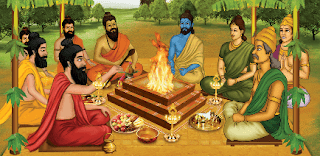Why do we put sindoor on Hanuman idols?

There is a very interesting Puranic story about it. Once Sita was applying vermilion ( sindoor ) on her forehead, Hanuman asked her why she was doing that. Sita replied that it would ensure the long life of her husband Rama. The next day, Hanuman came to the court of Rama, painted himself with vermilion (sindoor) pasted all over his body. Everybody laughed at him. Rama asked him about it. Hanuman replied that if the vermilion painted on the forehead of mother Sita could increase the life of Rama, painting all over his body might make him immortal. This is the story of his intense love and reverence for his master Rama. This is the matter of Puran. But there is another aspect which is described in the epic Mahabharata by Vyas. When the army of Sugreev was preparing for battle, the soldiers were applying red paste and the soldiers of Jamvant were applying black paste over their body. गिरिकूटनिभाः के चित्के चिन्महिषसंनिभाः शरदभृप्रतीकाशाः पिष्टहिंगुलकाननाः M

